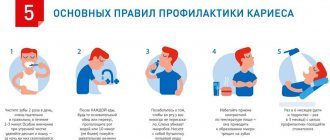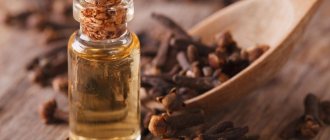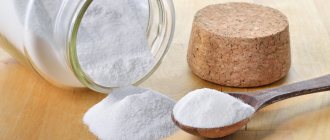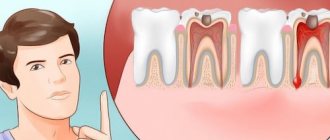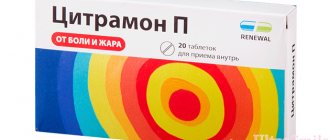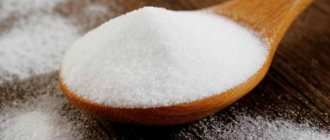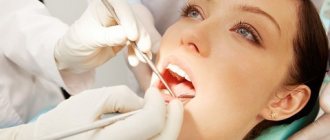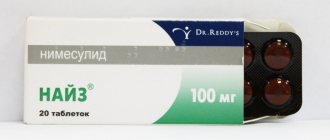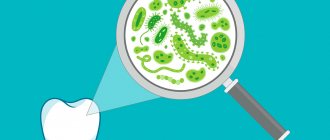Toothache is considered one of the most severe and unpleasant. It usually occurs suddenly when a person does not expect it. If this happens during the daytime, then you should immediately contact your dentist. But if this happened at night or on the road, then additional drugs and methods will be needed to help eliminate the pain and numb the tooth.
The causes of acute toothache can be different. This is an inflammatory process in the pulp cavity of the tooth and exposure of the dental nerve.
Common causes of toothache
Toothache can be aching, shooting, dull or sharp. It can occur at any time of the day, in both adults and children. There are three main groups of reasons why a tooth can hurt:
- bacterial infection of teeth and oral cavity;
- mechanical damage to hard dental tissues;
- general diseases.
Let's look at the main causes of pain.
Caries
This is the most common dental disease, affecting half of the world's population [1]. With caries, the hard tissues of the tooth are slowly destroyed under the influence of organic acids, mainly of bacterial origin.
For years, caries can go unnoticed. The first symptom is dark spots on the tooth enamel. At this stage, no pain is felt. The enamel is gradually destroyed, after which pathogenic bacteria reach the dentin, then to the vascular and nervous tissues of the pulp, as a result of which acute pain appears.
Important! Painful sensations when eating hot, cold, sour or sweet foods can be associated with both serious dental diseases and increased sensitivity of the enamel. In any case, with this symptom, consult a dentist to find out the cause of the painful reaction of the teeth to foods.
Pulpitis
Perhaps the most unpleasant thing is when your tooth hurts very badly at night. This often happens with pulpitis - damage to the neurovascular bundle. When inflamed, the pulp increases in size and puts pressure on the nerve endings. For this reason, severe pain occurs, which intensifies at night.
Wisdom tooth eruption
Figure 1. The image highlights wisdom teeth that are positioned incorrectly.
Source: JIOH / Open-i (Attribution-NonCommercial-ShareAlike 3.0 Unported (CC BY-NC-SA 3.0) If emerging wisdom teeth are positioned incorrectly (for example, at an angle to the dentition), as they grow, they put pressure on the adjacent tooth , thereby causing pain.Most often it is aching pain that can spread to the neck and head.
Gum diseases
Some of the most common gum diseases include gingivitis, periodontitis and periodontal disease. Gingivitis is an inflammatory process without compromising the integrity of the periodontal junction. If gingivitis is not treated, the disease progresses and periodontitis develops [2]. Chronic periodontitis with elements of degenerative tissue changes is called periodontal disease. Doctors have not used this term in world practice for more than 50 years, but in the countries of the former USSR it is still present.
Periodontitis
Periodontium is the connective tissue around the root of the tooth that can become inflamed. In this case, pus forms in the pulp, which leads to acute, sometimes unbearable pain.
ARVI
Acute respiratory viral diseases (ARVI) can also cause toothache. This often occurs with inflammation of the nasal sinuses (sinusitis, sinusitis). In such cases, as a rule, the tooth in the upper jaw hurts. Painful sensations in the lower jaw can occur with sore throat or pharyngitis.
Inflammation of the facial nerves
Hypothermia of the facial nerves or their viral infection (for example, the herpes virus) provokes an inflammatory process in the nerve fibers (neuritis). Most often, this leads to disturbances in facial expressions and possible pain.
General diseases
Pain in the teeth can also occur due to diseases of the internal organs. For example, these are diseases of the stomach, spine, cardiovascular pathologies, as well as metabolic disorders and a lack of certain vitamins and minerals.
Figure 2. Stages of tooth damage by caries. Source: Pikovit / Depositphotos
When you shouldn't go to the doctor
Often, when eating, we are faced with the fact that our teeth respond to us with incomprehensible “signals” - they begin to “cramp” and itching appears. You shouldn’t immediately sound the alarm - these may not be signs of dental disease, but simply evidence of illiterate food intake. This reaction is often caused by eating food that is too cold or too warm, or, even worse, by suddenly changing cold and hot foods (and vice versa).
Sudden changes in temperature not only cause toothache, but can also seriously damage tooth enamel. You shouldn’t eat ice cream after a cup of hot coffee - this could result in your tooth simply cracking! If a tooth hurts due to temperature changes, the toothache itself in such cases does not pose a danger - it is a reaction of your teeth to a “stressful” situation for them.
Another feature of the body that can cause toothache is the teeth’s sensitive response to weather changes. Sub-zero temperatures and icy cold can cause minor toothache, which will not be a sign of serious illness. This is a normal reaction of the body to weather conditions. To reduce discomfort from extremely cold temperatures, wear warm hats, turtleneck sweaters, and scarves that cover your neck and lower face.
What to do if your tooth hurts badly
Let's take a closer look at how to quickly relieve toothache at home using medications and improvised means.
Painkillers
The most reliable and fastest way to get rid of suffering is to take a painkiller. There are several groups of such medications that can be taken for toothache.
Nonsteroidal anti-inflammatory drugs (NSAIDs)
This is the most common group of painkillers used for toothache. NSAIDs have anti-inflammatory, analgesic and antipyretic effects. Such drugs act by suppressing the activity of the enzyme cyclooxygenase, which in turn takes part in the synthesis of prostaglandins. The latter are mediators of inflammation3.
What to take for toothache?
When a tooth hurts, nimesulide, ketoprofen, dexketoprofen, ketorolac, meloxicam, and ibuprofen are most often used. The names listed refer to the active ingredients. Drugs containing them may have different names.
Analgesics
There is no clear difference between analgesics and NSAIDs. However, while all NSAIDs can be considered analgesics, not all analgesics are NSAIDs.
The most popular analgesics used for toothache include metamizole sodium (analgin) and paracetamol.
Unlike NSAIDs, analgesics act directly on the nerve endings and pain centers of the brain. In this case, there is no effect on the inflammatory process.
Combination drugs
These are medications that contain several types of painkillers, for example, an analgesic and an NSAID or an NSAID and an antispasmodic. Most often, one of the components of combination drugs is paracetamol. Some medicines may also contain plant extracts, vitamins and other components.
Important! There are contraindications for taking painkillers. The above drugs should not be taken in the following cases:
- allergy to the components of the drug;
- severe dysfunction of internal organs (kidneys, liver, heart);
- diseases of the digestive system (gastritis, ulcers, ulcerative colitis);
- bleeding and bleeding disorders.
Children under 16 should not take aspirin because there is a small risk of developing a condition called Reye's syndrome.
How often can you take a painkiller?
The tablet will not cure the tooth, but it will temporarily relieve the pain.
Source: dml5050 / Depositphotos Medicines are used only to relieve symptoms. They should not be taken for longer than 3-5 days. If you do not have the opportunity to consult a doctor (for example, in case of acute toothache at night), strictly follow the instructions regarding the single dosage and duration of use without consulting a doctor.
The regimen for taking pain medications also depends on the mechanism of action of the drug. For example, doctors prescribe strong tablets for toothache after surgical operations. They can be taken for several days until the post-operative pain subsides.
Rinse for toothache
If you don’t have a painkiller on hand, you can rinse your mouth at home. The main effect of this procedure is the removal of food debris, which can irritate the nerve endings of the affected teeth.
Dissolve 1 teaspoon of baking soda in a glass of warm water and rinse your mouth with this solution after each meal. Instead of soda, you can use salt. Solutions of salt and soda have a mild anti-inflammatory and anti-edematous effect.
Folk remedies
The advisability of using folk remedies for toothache is questionable, but, nevertheless, some people willingly resort to such methods. Let's look at the most popular folk recipes:
- Apply cotton wool with a few drops of essential oil (for example, clove or tea tree oil) to the sore tooth.
- Rinse your mouth with a cooled decoction of medicinal herbs. Often, decoctions of sage, oak bark or horsetail are used for these purposes.
- Apply cotton wool soaked in tincture of valerian, eucalyptus or propolis to the tooth.
Therapeutic pastes for tartar
Hard plaque can be completely removed only by professional ultrasonic cleaning or using a special Air Flow device. Toothpastes are used more as a preventive measure; they can lighten pigmented areas and remove small plaques.
Such products are recommended for tea and coffee lovers and, of course, smokers. Typically anti-tartar pastes contain:
- a small amount of fluorine (0.1 - 0.6%);
- antiseptics;
- minimal amount of sodium lauryl sulfate.
These products are highly abrasive - the RDA index is above 100. It must be remembered that abrasives increase the permeability of enamel. This means that you will need to increase your care: use floss and rinses.
What not to do if you have a toothache
A person suffering from toothache strives to get rid of it by any means. But often they do not help, but only worsen the condition.
1. Do not use hot herbal infusions for rinsing - they should be warm.
2. Do not apply a heating pad or a warm compress to your cheek - heat will intensify the inflammatory process, and you will feel even worse. When exposed to heat, the blood vessels dilate and the infection can spread to healthy teeth.
3. Do not apply honey to the gums - a sweet product can provoke the development of a bacterial infection in the carious cavity.
4. Do not lie down all the time - in this position, blood flow to the problem tooth increases and the pain becomes stronger. Raise the pillow higher so that you are in a semi-sitting position.
5. Do not give gum injections yourself.
6. Do not apply the tablet to a sore tooth. The pulp from the tablet will not relieve pain, but can lead to a burn of the mucous membrane. The mechanism of action of painkillers does not involve their local use. The active substances must first enter the bloodstream in order to relieve pain.
What to do next?
It is not enough to just eliminate pain. It is important to find and get rid of the cause. As soon as this opportunity arises, you should visit a dentist. Many people delay treatment due to fear of dental procedures. Today such fears are groundless. Yes, treatment is not a pleasant procedure, but it does not cause pain either.
Specialists from City Dental Clinic No. 2 remind you that self-medication in the case of oral diseases is completely excluded, only a doctor can carry out the necessary therapy and prevent further aggravation of existing problems.
Toothache during pregnancy
Pain in this case can be associated both with dental diseases (discussed above) and with hormonal metabolic changes.
During pregnancy, toothache is more difficult to deal with, since not all painkillers are allowed during pregnancy. The likely benefits and possible negative consequences of taking this or that drug should be determined by the doctor in each specific case.
Most painkillers are not recommended during pregnancy. In cases where it is impossible to do without such a medicine, expectant mothers are prescribed antispasmodics (drotaverine), paracetamol or ibuprofen. The latter is allowed to be taken only in the 1st and 2nd trimesters.
Therapeutic pastes for bleeding gums
These products contain extracts of various medicinal plants. They soothe inflamed gums, relieve swelling, reduce bleeding, eliminate itching, cyanosis and redness. In addition, these pastes relieve pain. They can be used in the treatment of periodontitis or gingivitis. But we must remember that in case of serious diseases, pastes are effective only with dental treatment.
In the absence of serious measures, such pastes can temporarily hide the symptoms, but, unfortunately, they will not cure the disease.
Toothache in children
Already in the first year of life, the child experiences discomfort and pain in the gums, which indicates teething. In such cases, there is no need to go to the pediatric dentist. Routine examinations by a doctor are enough to warn parents about the possible consequences of teething.
Special teething toys with a cooling effect will help reduce your child’s discomfort.
A teething toy will reduce pain and discomfort in your child’s gums. Source: nesteaav / Depositphotos
Special toothpastes and silicone brushes will also help preschool children overcome toothache. As a pain reliever, you can use topical preparations in the form of gels.
The very first dental disease that a baby may encounter is bottle caries. You should not be dismissive of caries of baby teeth, reassuring yourself that baby teeth will still be replaced by molars. Dental diseases in childhood can impair the development of permanent teeth. In the most severe cases, there is even a risk of adentia - complete loss of a molar tooth.
Anti-caries pastes that restore enamel
Such products are designed to combat enamel demineralization and prevent the development of caries at the white spot stage. Pastes are based on calcium compounds or fluorides. You should not use products that contain both types of compounds. The fact is that fluorine and calcium react and form an insoluble residue, which means that during cleaning no active ions are released and no recovery occurs.
Calcium-containing pastes can be used every day. They are designed to correct mild thinning of the enamel.
Fluoride-containing pastes are designed to restore seriously damaged enamel. They can only be used with the permission of a doctor, as there is a risk of getting excess fluoride in the body. This can lead to brittle bones and teeth. Such products are used no more than twice a week. For greater effectiveness, they can be alternated with calcium-containing pastes.
What to do if your tooth hurts at night
The most insidious is night toothache. Often this symptom indicates pulpitis, which requires immediate medical attention. Therefore, if it is not possible to see a doctor at night, do it at the beginning of the working day.
Algorithm of actions for night toothache
- Rinse your mouth with a solution of salt or soda. Perhaps the acute pain is associated with food debris that irritates the nerve endings.
- Take a pain reliever. Choose those drugs that you have used before and are sure that you do not have an allergic reaction to them.
- Raise your pillow higher. This will help you fall asleep faster and reduce the throbbing pain that radiates to your head and neck.
- If you cannot bear the pain and medications do not help, contact a clinic that provides dental services at night.
- Call an ambulance if your toothache at night is unbearable. The doctor will give you an anesthetic injection.
- Visit your dentist in the morning to determine the cause of your toothache and begin treatment.
Pulpitis
This is an inflammation of the pulp (nerve) of the tooth, the process is usually accompanied by acute pain. Pulpitis occurs as a reaction to constant exposure to irritants that enter the pulp through a carious cavity, as well as due to the influence of microorganisms and toxins on the nerve of the tooth. Irritation of the pulp leads to a change in blood flow, which provokes increased pressure on the nerve fibers.
At the initial stage, pulpitis manifests itself as mild pain, which goes away when the irritant is removed. At this stage, the inflammation goes away on its own if the irritant is removed - that is, caries is cured and the tooth is filled, isolating the pulp from external influences.
If you do nothing, the inflammation gradually intensifies and the pain increases. The stage of acute pulpitis begins, irreversible changes occur in the pulp. Pain is easily caused by any irritant. The “don’t eat, don’t drink, keep your mouth closed” option doesn’t save you from pain. Very often, toothache worsens at night.
Pain in acute pulpitis can be very different:
- Sharp or blunt
- Pulsating or constant
- Localized or spilled
- Short or long term
If you continue to ignore your condition and do not consult a dentist, then the next stage is complications that are likely to develop with acute pulpitis, including purulent pulpitis.
Prevention
You will be able to avoid many dental problems if you adhere to the following prevention recommendations:
- visit your dentist every 6 months;
- brush your teeth twice or thrice a day;
- limit your consumption of sweets, as this promotes the growth of cariogenic bacteria in the oral cavity;
- Inspect your oral cavity regularly and if you find any defects (stains, holes, chips, cracks, inflammation), consult a doctor.
Clinical researches
The effectiveness of Asept toothpastes has been clinically proven:
- it has been proven that regular use of preventive toothpaste ASEPTA ACTIVE for a month can reduce bleeding gums by 60%, improve the overall condition of the oral cavity by 44% and reduce inflammation by 33%;
- It has been confirmed that regular use of preventive toothpaste ASEPTA SENSITIVE for a month can reduce bleeding gums by 62%, reduce the sensitivity of teeth and gums by 48% and reduce inflammation by 66%.
- It has been proven that regular use of professional toothpaste ASEPTA REMINERALIZATION after 4 weeks improved the condition of the enamel by 64% and reduced tooth sensitivity by 66%.
Sources:
- Clinical and laboratory assessment of the influence of domestic therapeutic and prophylactic toothpaste based on plant extracts on the condition of the oral cavity in patients with simple marginal gingivitis. Doctor of Medical Sciences, Professor Elovikova T.M.1, Candidate of Chemical Sciences, Associate Professor Ermishina E.Yu. 2, Doctor of Technical Sciences Associate Professor Belokonova N.A. 2 Department of Therapeutic Dentistry USMU1, Department of General Chemistry USMU2
- Clinical studies of antisensitive toothpaste “Asepta Sensitive” (A.A. Leontyev, O.V. Kalinina, S.B. Ulitovsky) A.A. LEONTIEV, dentist O.V. KALININA, dentist S.B. ULITOVSKY, Doctor of Medical Sciences, Prof. Department of Therapeutic Dentistry, St. Petersburg State Medical University named after. acad. I.P. Pavlova
- Report on the determination/confirmation of the preventive properties of personal oral hygiene products “ASEPTA PLUS” Remineralization doctor-researcher A.A. Leontyev, head Department of Preventive Dentistry, Doctor of Medical Sciences, Professor S.B. Ulitovsky First St. Petersburg State Medical University named after. acad. I.P. Pavlova, Department of Preventive Dentistry
Expert opinion
Lyubov Ivanovna Kopylova
dentist-therapist
Experience: more than 10 years
Temporary filling at home is an option for those who cannot get to the doctor for quality caries treatment. This is not an alternative method of dental treatment and is not an option for those who want to save money on visiting a doctor. Caries can be cured only in a dental clinic, using modern equipment for removing pathological tissue and high-quality filling material. It is important to understand that the temporary filling that you put on yourself does not stop the destructive process!
Types of temporary fillings
There are several options for temporary fillings:
- — Water-based artificial dentin. It is a mixture of distilled water and powder (zinc sulfate, zinc oxide, kaolin). The doctor brings the filling material to the desired consistency by adding water.
- — Oil-based dentin. The composition of such artificial dentin is the same, but not with water, but with clove or peach oil. The material does not need to be mixed; it is sold ready-made.
- — Special cement. There are several material options. It is used for teeth exposed to chewing stress. The product also serves as a gasket when filling canals.
- Polymers. The rubber-like paste, which hardens when exposed to light, is a durable material that adheres well to the surface of the tooth.
When is a temporary filling required?
A temporary filling is much inferior to a permanent one in terms of strength and durability. It is only needed for a couple of days to keep food and other substances out of the tooth cavity between visits to the dentist. Such a filling can be installed in the following cases:
- — If the root canal treatment was lengthy and the installation of a permanent filling is postponed to the next visit.
- — A temporary filling can serve to hold medication placed in the tooth cavity.
- — If the doctor is not sure that the nerve remains intact. Waiting some time will help you understand whether the tooth can be covered with permanent material.
